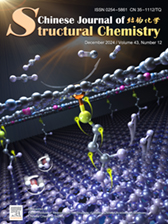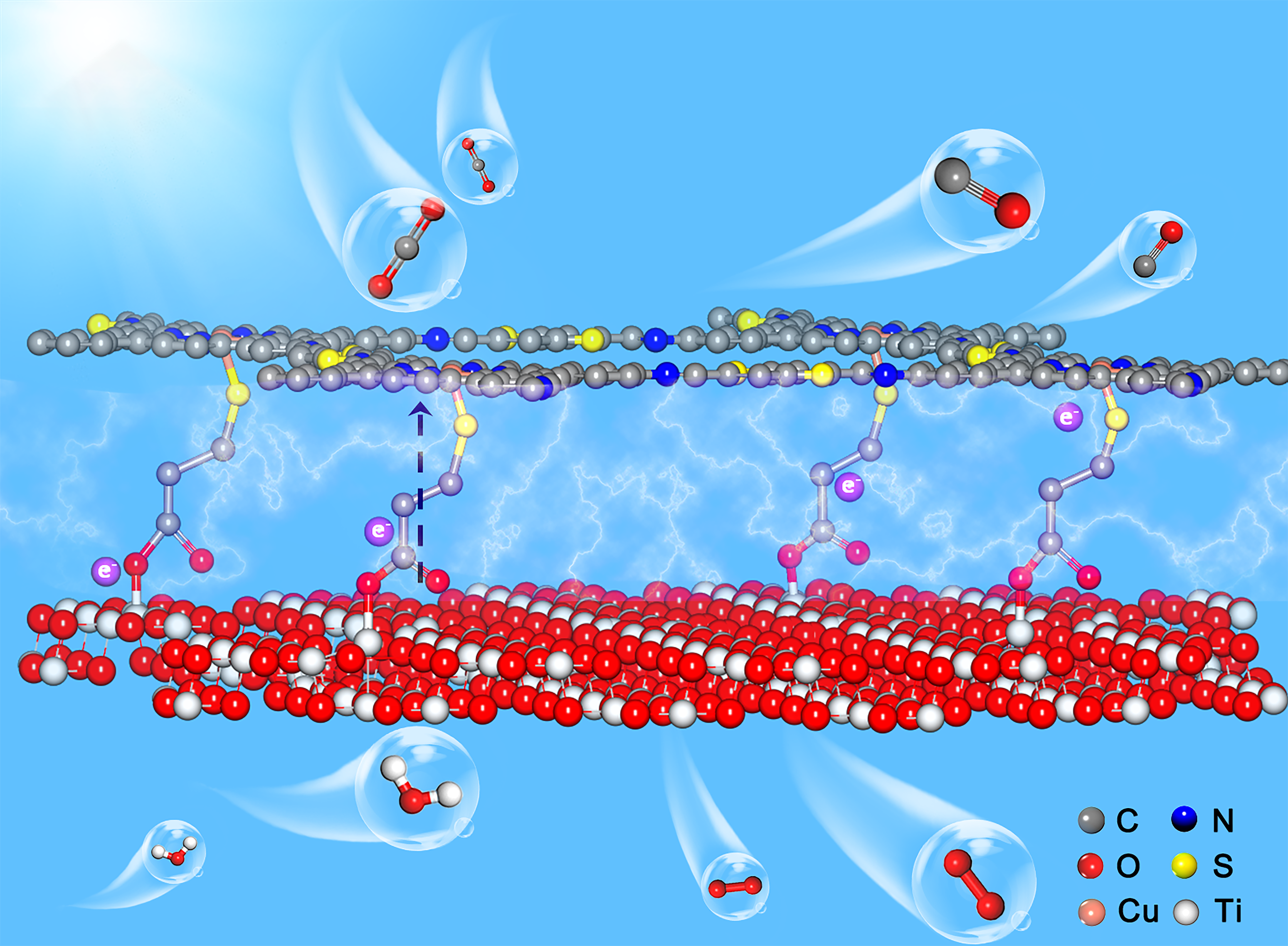
Alkyl-linked TiO2@COF heterostructure facilitating photocatalytic CO2 reduction by targeted electron transport
Jiangqi Ning, Junhan Huang, Yuhang Liu, Yanlei Chen, Qing Niu, Qingqing Lin, Yajun He, Zheyuan Liu, Yan Yu, Liuyi Li* Submit a Manuscript
Jiangqi Ning, Junhan Huang, Yuhang Liu, Yanlei Chen, Qing Niu, Qingqing Lin, Yajun He, Zheyuan Liu, Yan Yu, Liuyi Li*
Chin. J. Struct. Chem., 2024, 43: 100453. DOI: 10.1016/j.cjsc.2024.100453
December 15, 2024
Covalent organic framework; Photocatalysis; Reduction of CO2; Heterostructure; Targeted electron transport
ABSTRACT
Targeted electron transfer to catalytically active site for CO2 reduction is promising for enhancing the efficiency of artificial photosynthesis. Here, we demonstrate a design of an alkyl-linked heterostructure composing of TiO2 and a Cu-porphyrin-based covalent organic framework (TiO2@CuPorTT-COF) for the photoreduction of CO2 with H2O. Through specific coordination effect, the alkyl chain bridges TiO2 and Cu moiety in COF. Upon light illumination, the photoinduced electrons in TiO2 can be directionally transported across the interface along the alkyl chain to the Cu active sites to reduce adsorbed CO2, while the left holes are consumed by the H2O oxidation, enhancing the spatial separation and utilization of electron-hole pairs. Accordingly, the TiO2@CuPorTT-COF enables remarkably superior catalytic activities over the counterpart without the alkyl bridge for electron transfer with 5 times of CO production rate. An apparent quantum efficiency of 0.455% at 380 nm is achieved. Moreover, a dynamic evolution of Cu active site for CO2 reduction is revealed, which can be promoted by the targeting electron transport approach. This work provides a targeted electron transport strategy for constructing photocatalysts.






